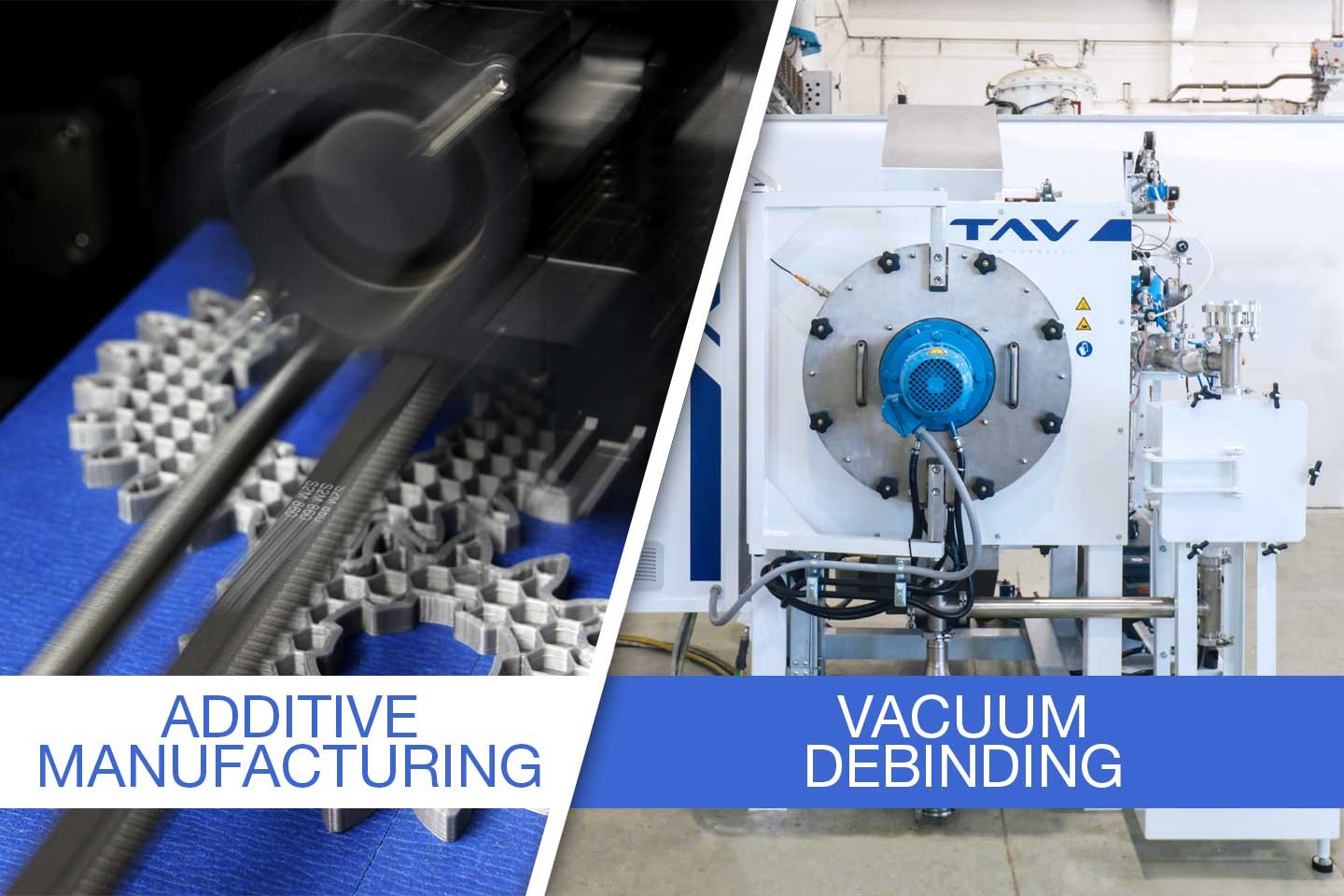How to debind parts produced by additive manufacturing
Additive manufacturing is a manufacturing technology that is gaining more and more ground among metallurgists. The process involves all the techniques used to create 3D metal objects from a digital design. The notable increase in the world of metal additive manufacturing of the use of methods such as the Metal Injection Molding (MIM), the Binder Jetting (BJ) and the Fused Deposition Modeling (FDM), prompted TAV VACUUM FURNACES to design and install a vacuum furnace for thermal debinding in its Research and Development laboratory, in order to experiment the best solutions for this delicate post-production phase. Let's find out what debinding is, how it is obtained and above all which are the most suitable tools to create high quality components without risking contamination.

Additive manufacturing is a manufacturing technology that is gaining more and more ground among metallurgists. The process involves all the techniques used to create 3D metal objects from a digital design.
The notable increase in the world of metal additive manufacturing of the use of methods such as the Metal Injection Molding (MIM), the Binder Jetting (BJ) and the Fused Deposition Modeling (FDM), prompted TAV VACUUM FURNACES to design and install a vacuum furnace for thermal debinding in its Research and Development laboratory, in order to experiment the best solutions for this delicate post-production phase.
Let's find out what debinding is, how it is obtained and above all which are the most suitable tools to create high quality components without risking contamination.

 nikhil
nikhil 





